Reviews
Fritz Lang
Germany, 1928
Credits
Review by Ian Johnston
Posted on 17 March 2014
Source Masters of Cinema DVD
Categories Silent Lang
1927 saw Fritz Lang emerge pretty much the worse for wear from the folie de grandeur of Metropolis. The massive cost overruns (which led to UFA producer and Lang supporter Erich Pommer’s departure), the poor critical and audience reception, and the studio’s savage re-editing of the film all meant that the relationship between studio and director was now at breaking point. That Lang now set up his own production company was as much UFA’s doing as Lang’s himself: the studio had both turned down a proposal for a new Harbou-Lang extravaganza, this time on the Flood, and were anxious under their new management to limit their financial exposure if they worked with Lang again. Spies was the first film to come out of these new production circumstances.
Coming after the mediaeval mythmaking of Die Nibelungen and the fantasy and symbolism of Metropolis, Spies marks a return to the contemporary urban world, the world of urban crime masterminded by a single genius intelligence—the world, in other words, of the first of Lang’s three mammoth films of the twenties: Dr Mabuse der Spieler. Nothing underlines this connection more than the fact that Haghi, the mastermind of Spies, is played by the same actor as Mabuse, Rudolf Klein-Rogge.
But there are distinctive differences too. Mabuse’s monumentality, both in its length (a product of the time and trouble it takes to give psychological depth to its characters) and in its overt ambition to offer a social portrait of its time, is replaced by the stripped-down, elliptical and even abstract quality of Spies’ style. Mabuse took its first twenty minutes to detail the complex stages of Mabuse’s plan to manipulate the stock exchange, all ending with the image first of Mabuse-as-financier than of the undisguised Mabuse superimposed over the final shot of this “first act” and staring straight out at us, the “author” in control of the world of the story. Spies does the same but in an opening sequence of a mere couple of minutes which barely sketches the outlines of the story: brief shots of
- a hand opening a safe
- a document being inserted into an envelope
- a motorcycle rider shot low-angle
- a radio signal
- the news announcement that results
- a passenger in an open car being shot
- a hand reaching into the car to grab a document
- a man in a telephone booth
- a newspaper headline;
- a flurry of brief shots of distraught officials
- a senior official reading in his office
- a shot of the newspaper he’s reading
- all passing by in an onward rush of images
Then comes the longest continuous sequence of shots as a driver leaps out of an open car, runs into a building, then into an office to declare “I know… who…” only to be shot through the open window. “Almighty God—what power is at play here… ?” And as an answer, a shot of Haghi face to the camera: “I”. It’s an impressive display of fast-paced editing (was Lang influenced by Eisenstein, who had been a visitor to the Metropolis set?) where explanations as to meaning or context within each shot are kept to the minimum but which still makes crystal clear the issues at stake.
With Haghi there are none of the Mabuse trappings of the supernatural or paranormal, no mind control through hypnosis or the like. Haghi is the straightforward leader of a spy ring run under the cover of a bank, although his precise motivation - what power is he working for? - is kept opaque. True, signs such as Haghi’s Lenin-like goatee and the background to the Russian Sonia, one of Haghi’s seductress agents, point to a Soviet connection, but it’s by no means explicit and Lang never builds on these oblique references. In point of fact, there was a Soviet source to the concept of Haghi and his bank, the 1927 Arcos affair when British police raided a Soviet-owned bank and trading company under the suspicion it was being run as a cover for espionage. But, again, Lang doesn’t develop on this: Haghi and his operatives are never portrayed as a Soviet ring spying against the Capitalist West. Indeed, we’re left with the sense, rather, of Haghi as a Mabuse alter ego, manipulating people and events for the pure pleasure such control gives him.
This deliberate imprecision is reflected also in the vagueness of the film’s locations. What country, exactly, is it taking place in? The head of the Secret Service is given the almost absurdly English name of Burton Jason, and in the shorter 90-minute version that Spies was available in until only recently the hero was likewise coded as English in being named Tremaine rather than the original’s “Agent No. 326”. But everything else, such as the talk of crossing borders by train, points to a European if not simply German setting. In the end what Lang offers with Spies in both its stripped-down film style and its narrative imprecision is an abstract of the spy tale.
The central plot thread is, accordingly, very straightforward: Haghi uses his Russian agent Sonia to seduce 326 but his plans go awry when the two fall in love; and around this Lang builds up a whole series of parallels and mirrorings. Obviously, there’s the contrast between the two espionage operations, Haghi’s spy ring and the state’s secret service; yet both are also shadowed by a third, run by the Japanese who are protecting the secret treaty that is the object of Haghi’s machinations. There are two points in the film when the two state agents, 326 and the Japanese Matsumoto, meet, both times prior to an attempted seduction - one successful, one not - by one of Haghi’s two seductress agents. These two agents form another doubling, contrasted by the film on a moral plane, the conscience-stricken Sonia played off against the amoral and materialistic Kitty. There are also two suicides of Haghi’s victims, one on-screen and on off. This structural principle holds true to the character of Haghi himself, not only split between his respectable banker persona and his true identity as spy master, but also within the spy realm in his double role as a duplicitous secret service agent; which itself splits off in to his double agent’s cover role of Nemo the stage clown.
It’s no surprise with all this fragmenting of narrative elements that Spies in essence offers us three successive climaxes. First, there’s the formal tour de force of the train crash (Haghi’s agents sabotage the train 326 is travelling on) with Lang cutting with increasing tempo between the two trains 326 and Sonia are on, ratcheting up the tension which is only released by the crash itself. Then, there’s the authorities’ attack on Haghi’s bank, something of a re-run of the ending of Mabuse and with its ticking-clock scenario (Sonia is trapped in a locked room and doomed to die) a precursor to a similar scene in The Testament of Dr Mabuse.
Finally, there is the film’s concluding sequence, Haghi’s sequence. It’s a curious - but brilliant! - ending, for essentially the story has already been concluded. The bank has been raided, the spy ring broken up, a host of agents handcuffed in pairs and taken away—and the real Haghi, minus his goatee, makes himself up as Nemo the clown for what will prove to be his final performance. The off-stage world encroaches upon his slapstick performance - Jason, 326 and Sonia stand watching and waiting in the wings - as his gun prop is then applied for real; in the last few rapid shots of the film Haghi throws out a manic laugh at us, turns the gun on himself, cries out “Curtain!”—and the theater roars with applause as the film’s own “curtain” abruptly falls. It’s a profoundly cynical, nihilistic, sudden twist to the film that strips of meaning the conventional heroics expounded by 326 all the way through. Lang’s crisp, lean model of the spy genre is suddenly ripped open—to reveal precisely nothing underneath.
More Silent Lang
-
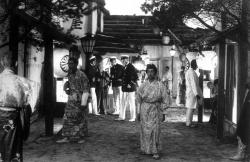
Harakiri
1919 -
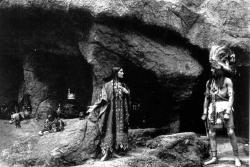
The Spiders
1919 -
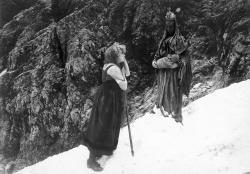
The Wandering Shadow
1920 -
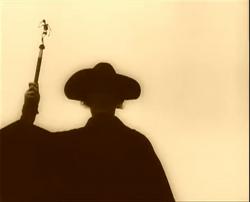
Destiny
1921 -
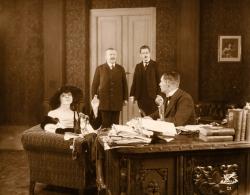
Four Around the Woman
1921 -
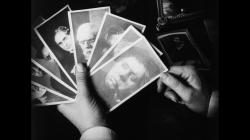
Dr. Mabuse the Gambler
1922 -

Die Nibelungen
1924 -

Metropolis
1927 -
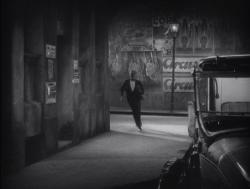
Spies
1928 -

Woman in the Moon
1929
We don’t do comments anymore, but you may contact us here or find us on Twitter or Facebook.



